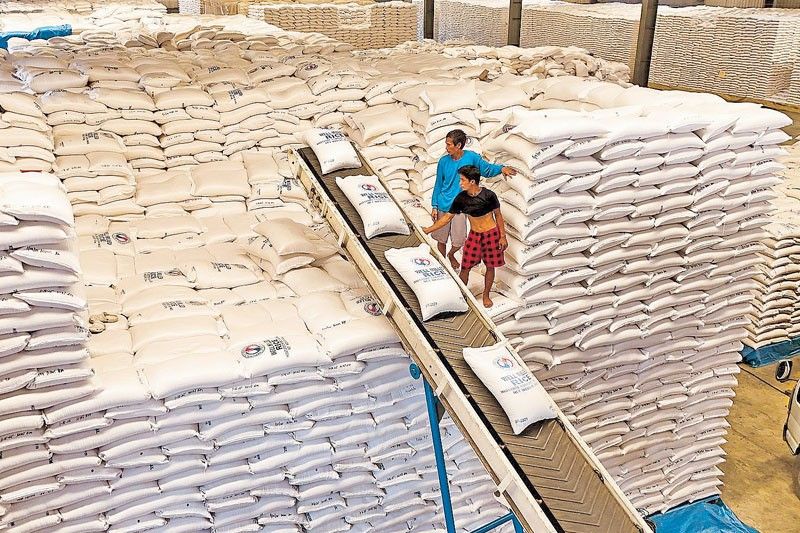Only 2 markets violate max SRP for imported rice

MANILA, Philippines — Two Metro Manila markets did not comply with the maximum suggested retail price (SRP) of P58 per kilo of imported rice after it took effect yesterday, according to the Department of Agriculture (DA).
Guadalupe Commercial Complex in Makati City sold imported rice at P59 per kilo, while Pasay Public Market sold rice at P60 per kilo, Agriculture Assistant Secretary and spokesman Arnel de Mesa said.
Executive Order 62, which reduced to 15 percent the tariff on imported grains, did not result in lower rice prices.
The DA will submit a report to the Department of Trade and Industry and local government units (LGUs) regarding the two markets’ non-compliance, De Mesa said.
After two weeks, he said the maximum SRP will be reviewed and could decrease to P55 per kilo.
Agriculture Secretary Francisco Tiu Laurel Jr. will have separate discussions with supermarkets to bring down rice prices, De Mesa noted.
Laurel is expected to declare a food security emergency tomorrow after reviewing the National Price Coordinating Council’s resolution.
Upon the resolution’s approval, De Mesa said the National Food Authority (NFA) will sell rice at P36 per kilo to local governments. Local authorities can resell the rice to the public at P38 per kilo.
NFA rice will be available in the markets starting Feb. 1, he noted.
As for the issue of congested NFA warehouses, De Mesa said this is the first time that the NFA procured rice from farmers after many years.
“The NFA has been regularly selling rice to the Department of Social Welfare and Development, but it is not enough,” he said.
The NFA earlier disclosed that at least 300,000 metric tons of aging rice need to be disposed of.
Palay output
Meanwhile, about 20.46 million metric tons (MMT) of palay production is being targeted this year by the DA after President Marcos vowed to restore P10 billion for the national rice program.
The program only received an allocation of P21.68 billion in the 2025 national budget, which the DA said could be due to the Rice Competitiveness Enhancement Fund’s increased allotment, from P10 billion to P30 billion.
In 2024, the program had a P30.88-billion allocation. Its proposed 2025 budget was P31.4 billion.
Palay production in 2024 decreased to 19.3 MMT amid damage caused by successive tropical cyclones.
Tiu Laurel said palay harvest is expected to exceed last year’s 20.06 MMT.
Vegetable prices
Tomato prices have dropped by half, from last week’s P240 per kilo to a prevailing price of P120, De Mesa said.
The retail prices of highland and lowland vegetables also decreased: bell pepper, P300 per kilo, from P350 to P400; broccoli, P180, from P250; cabbage, P80, from P120 and cauliflower, P150, from P200.
At least 45 percent of tomato production was affected by tropical cyclones during the last quarter of 2024.
Pork prices
While 70 percent of the country’s pork consumption last year came from imported meat, the retail price remains high at P450 per kilo despite tariff cuts, according to farmers’ group Samahang Industriya ng Agrikultura (Sinag).
Pork consumption in 2024 totaled 1.55 MMT, of which 733,000 MT or 70 percent came from imported pork, Sinag executive director Jayson Cainglet told The STAR, citing data from the Philippine Statistics Authority and Bureau of Animal Industry.
Reduced tariffs on imported pork have been implemented since 2021, Cainglet noted.
“For the past four years, a reduced tariff did not help in bringing down the retail price (of food commodities),” he said.
Based on the DA’s monitoring, the retail price of pork belly reached as high as P450 per kilo and pork shoulder, as high as P390 per kilo.
During the holidays, pork prices only reached as high as P420 per kilo.
As for the DA’s claim that a supply shortage led to high pork prices, Cainglet said data showed that the total meat supply for local and imported pork was at 220 million kilos as of Dec. 31 last year.
Local pork production is expected to improve further with the expected commercial use of the African swine fever vaccine in April, Cainglet noted. — Jasper Emmanuel Arcalas
- Latest
- Trending






























